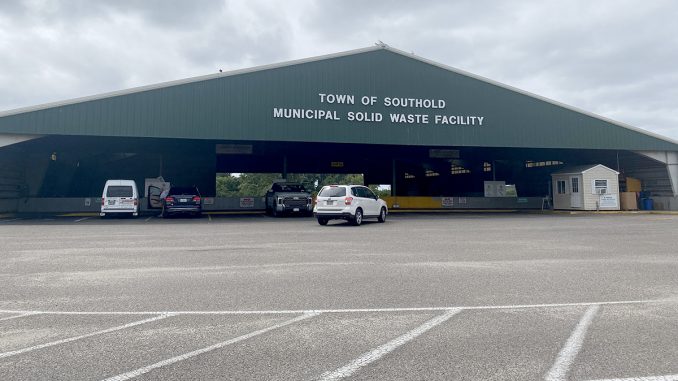
With the scheduled closure of the Brookhaven landfill approaching, the Town of Southold will have to find a new place to dispose of its construction and demolition (CD) waste. The Town contracts with Mattituck Environmental to truck the waste to the Yaphank facility. The landfill will stop accepting CD at the end of this year.
“It’s certainly a Long Island problem,” said Town of Southold solid waste coordinator Nicholas Krupski. “It’s really a bigger problem than that, but when you get off the island, it’s easier to get rid of waste, so it’s not on everyone’s radar. But it’s really going to come down to how we’re demoing, and if there’s more that can be reused, and people in need who can and are willing to use these things.”
One reason so much construction waste ends up in the landfill is how the debris is being handled. Instead of keeping them separated, concrete, asphalt and other waste materials are often mixed together, rendering them effectively irredeemable.
“Part of the problem is when it gets mixed together. If you have clean concrete, people tend to want that product,” Mr. Krupski said. “If you mix brick in there, it’s not as desirable. And then add asphalt mix, and it’s not desirable at all. Now, with those things all separated, people will certainly take concrete. People certainly take asphalt.”
The Town has several programs either already in place or in the works to divert waste away from landfills. The Reuse Center on Cox Lane in Cutchogue is devoted to reusing discarded-but-still-useable items, may be expanded. Officials are also hoping to implement a permanent composting initiative for food waste. “Long term, we really have to look at recycling as much as we can, because no matter what we do with it, it’s a shame to waste any material,” Mr. Krupski said. “We need to figure out how to reuse more things; that’s everything, across the board. We are trying to get a food waste pilot going to pull that out of the municipal solid waste (MSW) stream. We have our little reuse center here to keep that out of construction and out of the MSW. That’s a wildly popular site. The future is expanding on those things and trying to reduce waste.”
Like anything new, the food waste program involves a bit of a learning curve. Keeping food waste separate from the packaging it comes in is key to making composting work, as any non-food items can render a batch contaminated. Without the manpower to sort through it, everything goes in the trash. “It’s going to be people taking a little extra step, but ultimately, something like a food waste [program] will save them money, because they’re not throwing it in with the garbage,” Mr. Krupski said. “It’s definitely a positive thing, anything we can reuse, and then it turns into a usable product at the end.”
Ultimately, disposing of the waste, whether through reuse/recycle programs or at off-island facilities is a challenge all Long Island communities are facing. Mr. Krupski said Southold is open to all viable options. “We do need to come up with a more localized solution to this stuff, whether it’s larger reuse centers, larger recycling centers for construction and demolition processing, and then down the road maybe some sort of a waste-to-energy plant. We certainly need support from the state … at the end of the day, we’re not going to stop generating trash, so we need to figure out the best option for dealing with it.”

